This is another excerpt from my book, “Teddy Hit Me”. Enjoy my pain…
“When I was four years old, living in Castlegar, BC, my mom’s friend was over for a visit. With her she brought her son, another active four-year-old boy that I sometimes played with at church. We lived in a fairly rustic setting. OK, that’s an understatement; our backyard was a steep, tree-covered hill covered with dense bush. In other words, the perfect place for four-year-old boys to play completely unsupervised. The memory is a brief one but I remember standing above my playmate, slightly up the hill from where he was squatting and poking through the leaves and other foliage on the ground. Somehow, I ended up with a large rock in my hands. Yes, hands. It was big enough that it took two hands for me to lift it. I don’t remember if he looked at me at all, but there is a whisper of memory of him gazing up at me, where I stood holding the rock aloft, with a puzzled look on his face, as if questioning whether I was actually going to do what I appeared to be set to do. The answer to his unspoken question came abruptly and painfully, as I dropped the rock. On his head.
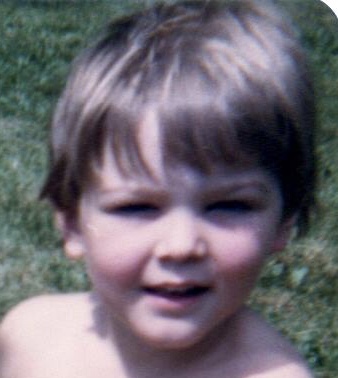
Obviously the face of a killer…
Predictably, the scene shifts in my memory to the living room, standing in front of my mom and her friend. “Teddy hit me with the rock!” my friend cried. I remember my mom’s look of disbelief (probably mingled with embarrassment) as she grasped for explanations as to why her sweet little boy would intentionally drop a rock on someone’s head. “Teddy, why would you do that?” she asked, partly in reproach and partly out of curiosity. My answer left her wanting more, I suppose, as I came up with the best explanation I could think of. “I don’t know.”
Less than a year later, having started kindergarten at Kinnaird Elementary in Castlegar, I remember standing in line outside the classroom before the start of school. That day, I had brought my hard plastic dinosaur to school with me, beaming with pride. It was a brown stegosaurus. I’ve always wondered if there was any scientific basis for the colours assigned to our reconstructions of dinosaurs or if they are just arbitrarily assigned based on the artist’s imagination.

Seems legit. Isn’t science amazing?
Anyway, there was this little girl in my class who had a little bit of something, a little bit of yucky in the corner of her mouth. It reminded me of some food, like toast, stuck to her face. “She must not know that she has food on her face,” I reasoned, because who would intentionally go to school, even kindergarten, with food stuck to her face? I also reasoned that it would be rude to outright tell her that she had food on her face or to ask what was stuck to her face. At the same time, my attention was magnetically drawn to the thing, and I couldn’t just ignore it or let it be. So, being the benevolently clever lad that I was, I determined the best way to address the situation was to have my dinosaur friend, “eat” whatever it was that was stuck to her. “He’s hungry!” I proclaimed loudly and shoved the dinosaur into her face, using the hard sharp teeth (curiously white for a herbivore that didn’t brush) to scrape the stuff off. She recoiled with a look of shock and horror, which quickly transformed to the closed eyes and exaggerated frown of an incoming but still-silent burst of painful tears. When she finally exploded, I was caught completely off guard. What had I done? I didn’t think it was that rough. Was it too rough? Then I heard another little girl in the line yell (with what seemed like great pleasure) to the teacher at the head of the line, “Teddy hit her in the face!” Then, the explanation came, not to me but to the teacher, as if I already knew the story. “She has stitches in her face and Teddy hit them with his dinosaur! ON PURPOSE!” Stitches? I was even more confused. This was the first time I had ever seen stitches, little brown threads tied into a knot in the corner of her lip. In my mind, I collected data from my short years on earth. That was the moment when I learned that stitches don’t look like they do in the comic books: little railroad tracks, standing out from the skin in clear relief.

It turns out that this was not an accurate representation…
There were layers of pain to this experience. First, the idea that I was being accused of intentionally hurting this girl when I thought I was sparing her feelings. Second, the teacher not knowing the full story and me not having a voice to explain myself. Third, a deeper feeling of guilt that I didn’t know what stitches looked like. I remember thinking, “How does everyone else know what stitches look like but I don’t? Is this something that I should have known?”. This question, in an infinite variety of iterations repeated itself throughout my childhood and early adulthood. “How does everyone else seem to know this thing? Am I supposed to know this thing? How come I don’t know this thing?” Of course, looking back now, I know that there was no way I could have known what stitches looked like because I had never seen them before. At the time though, it was just another seed planted that would grow into my well-concealed negative self-image.”


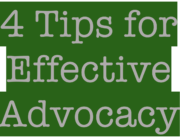



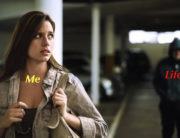
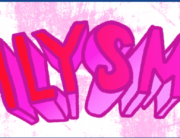






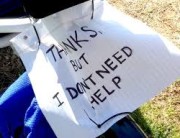
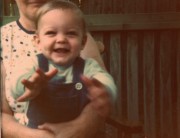
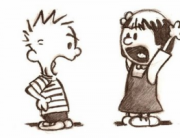

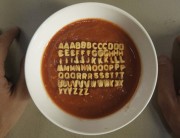



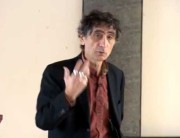

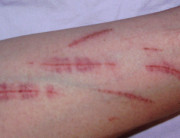

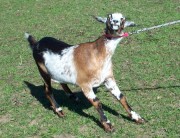



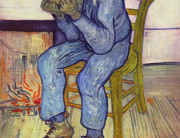






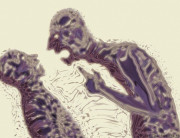
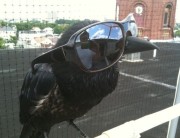

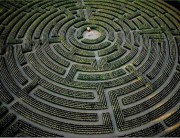






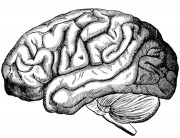



Recent Comments